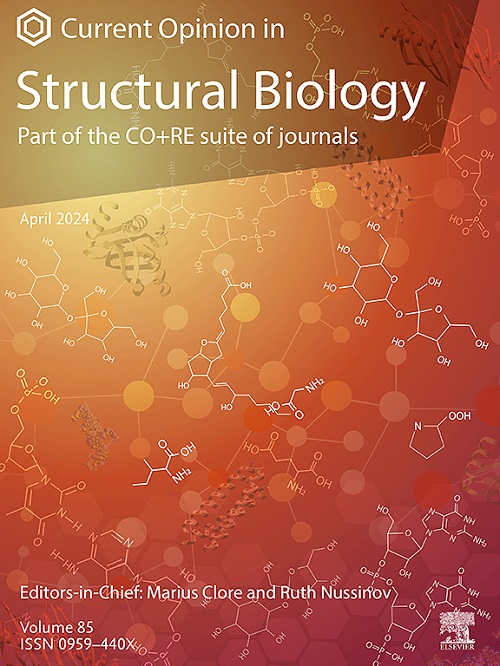Nanodisc-reconstitution for single particle cryo-EM structure determination of membrane proteins
IF 6.1
2区 生物学
Q1 BIOCHEMISTRY & MOLECULAR BIOLOGY
引用次数: 0
Abstract
Reconstitution of membrane proteins in nanodiscs has proven to be a highly effective approach to study membrane protein structures in a lipid bilayer, resulting in many recent single particle cryo-EM structures. While most of these studies employed membrane scaffold protein (MSP) nanodiscs, additional types of nanodiscs were developed based on MSPs and provide alternative approaches. Nanodiscs have been particularly effective in solving structures of different protein conformations and of bound lipids, demonstrating key roles of specific lipids in structural integrity and protein function. At the same time, discrepancies of lipid behavior in nanodiscs compared to native membranes and liposomes necessitate careful scrutiny of reconstitution parameters and further evaluation. This brief review covers an overview of types of nanodiscs currently in use for cryo-EM structural studies, their advantages and limitations, as well as examples of the dramatically increased understanding they can reveal.
膜蛋白单颗粒低温电镜结构测定的纳米圆盘重构
纳米圆盘中的膜蛋白重构已被证明是研究脂质双分子层中膜蛋白结构的一种非常有效的方法,导致了许多最近的单颗粒低温电镜结构。虽然这些研究大多采用膜支架蛋白(MSP)纳米片,但基于MSP开发了其他类型的纳米片,并提供了替代方法。纳米圆盘在解决不同蛋白质构象和结合脂质结构方面特别有效,证明了特定脂质在结构完整性和蛋白质功能中的关键作用。同时,与天然膜和脂质体相比,纳米圆盘中脂质行为的差异需要仔细检查重构参数并进一步评估。这篇简短的综述涵盖了目前用于低温电镜结构研究的纳米片类型的概述,它们的优点和局限性,以及它们可以揭示的急剧增加的理解的例子。
本文章由计算机程序翻译,如有差异,请以英文原文为准。
求助全文
约1分钟内获得全文
求助全文
来源期刊

Current opinion in structural biology
生物-生化与分子生物学
CiteScore
12.20
自引率
2.90%
发文量
179
审稿时长
6-12 weeks
期刊介绍:
Current Opinion in Structural Biology (COSB) aims to stimulate scientifically grounded, interdisciplinary, multi-scale debate and exchange of ideas. It contains polished, concise and timely reviews and opinions, with particular emphasis on those articles published in the past two years. In addition to describing recent trends, the authors are encouraged to give their subjective opinion of the topics discussed.
In COSB, we help the reader by providing in a systematic manner:
1. The views of experts on current advances in their field in a clear and readable form.
2. Evaluations of the most interesting papers, annotated by experts, from the great wealth of original publications.
[...]
The subject of Structural Biology is divided into twelve themed sections, each of which is reviewed once a year. Each issue contains two sections, and the amount of space devoted to each section is related to its importance.
-Folding and Binding-
Nucleic acids and their protein complexes-
Macromolecular Machines-
Theory and Simulation-
Sequences and Topology-
New constructs and expression of proteins-
Membranes-
Engineering and Design-
Carbohydrate-protein interactions and glycosylation-
Biophysical and molecular biological methods-
Multi-protein assemblies in signalling-
Catalysis and Regulation
 求助内容:
求助内容: 应助结果提醒方式:
应助结果提醒方式:


